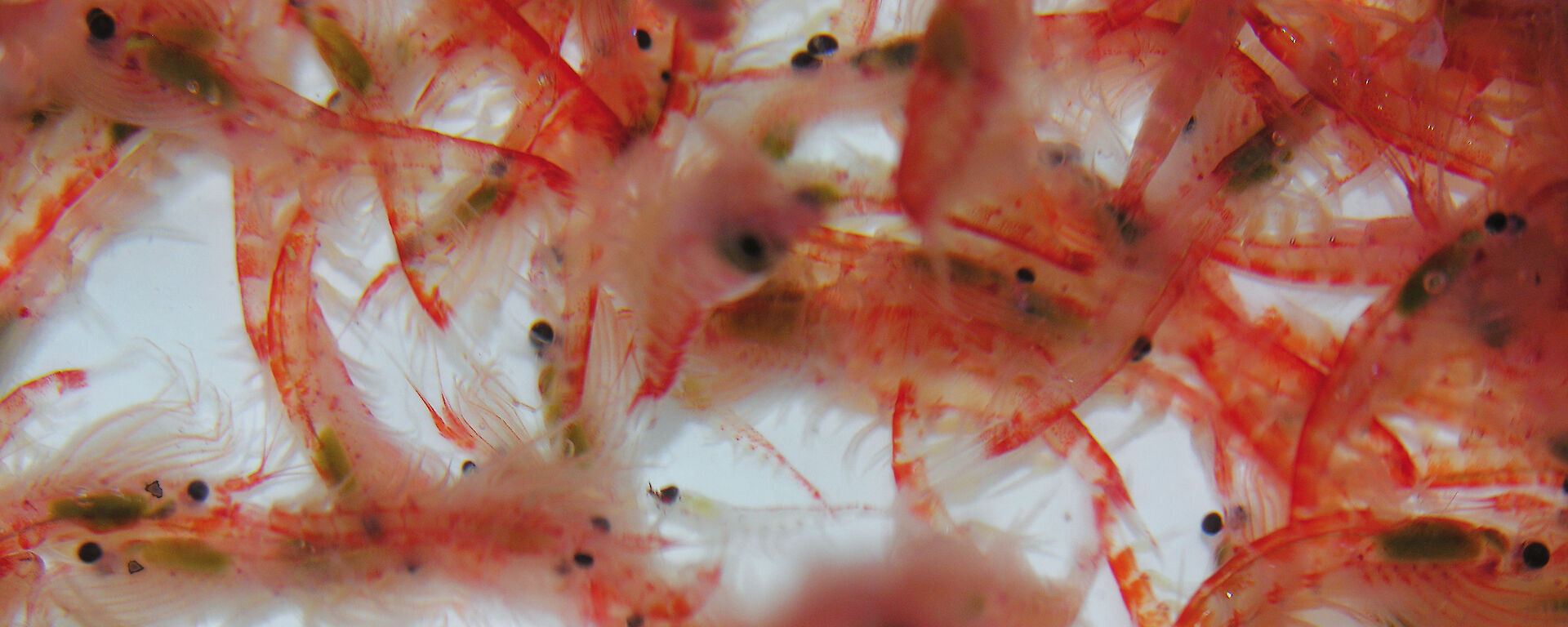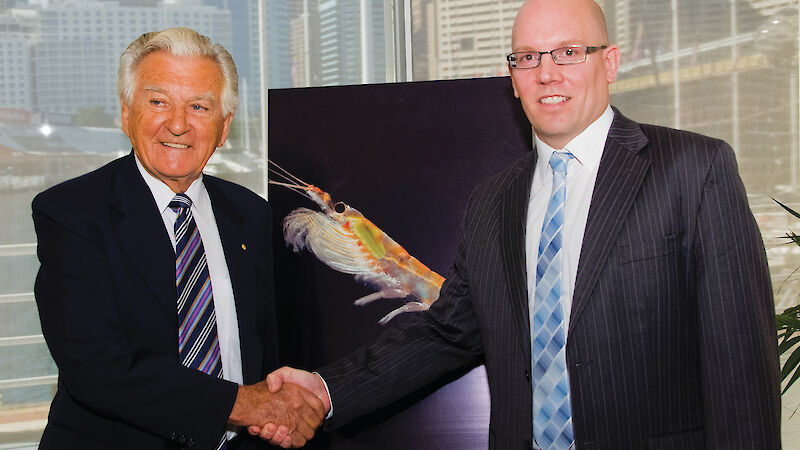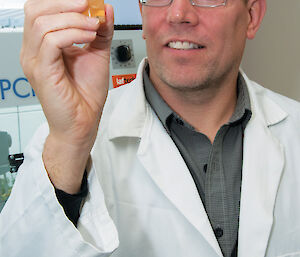Australian Antarctic Division molecular ecologist Dr Bruce Deagle was the inaugural recipient of the RJL Hawke Postdoctoral Fellowship for Antarctic Environmental Science* in 2011. During his three-year fellowship Dr Deagle made significant advances in krill research.
Not long after I started my fellowship project, the size of the krill genome was estimated. At 50 billion base pairs it was huge — about 15 times larger than the human genome. This discovery gave me the opportunity to use ‘high-throughput DNA sequencing’ (producing thousands of different sequences concurrently) to characterise smaller parts of the genome and, at the same time, address ecologically important questions about this keystone Antarctic species.
The ecological questions fall into two broad categories. First, is there any segregation of krill into semi-independent populations in their distribution around Antarctica? Second, what are the underlying causes behind the sensitivity of krill to ocean acidification, which is caused by increasing amounts of atmospheric CO2 dissolving in the ocean?
These questions seem quite unrelated, but both can be answered using recently developed cutting-edge genetic methods that allow us to examine DNA sequences in more detail than ever before.
To address the first question on population structure my colleagues and I sequenced genetic markers from throughout the Antarctic krill genome. These markers are DNA sequences shared by all krill, which vary enough to be able to detect potential differences amongst the krill found in different regions around Antarctica. We looked at variation in about 150 krill from five Southern Ocean sites (covering the Atlantic, Pacific and Indian Ocean sectors) and collected over 90 billion bases of DNA sequence data.
The data were incredibly complex due to a large component of each krill genome being composed of repetitive DNA elements. These repetitive elements are a diverse array of DNA sequences that are repeated many times within the genome of an individual krill (from duplicates to thousands of copies).
Once we devised a method to reliably characterise these genetic markers we could get a clear DNA ‘fingerprint’ for an individual krill — a set of genetic markers that distinguish an individual krill from all others. However, we found no signal related to the collection sites. This means that if we took two krill from a swarm in the Ross Sea and one from the South Atlantic 7000km away, each krill would contain genetic variability, but there would be no set of genetic markers that were more similar in the two Ross Sea krill. This lack of genetic structuring supports the idea that there is a continuous flux of krill between regions carried by the strong Antarctic Circumpolar Current. This research was published in the journal Molecular Ecology under the title Antarctic krill population genomics: apparent panmixia, but genome complexity and large population size muddy the water.
The second ecological question we investigated was the underlying causes behind the observed sensitivity of krill to ocean acidification. Specifically, we wanted to understand the physiological pathways in krill that are being affected.
To do this we looked at how krill modify the use of their genes within the genome (known as ‘gene expression’) under different CO2 exposure conditions in the laboratory. Since each gene has a particular biochemical function (for example, they may be involved in a particular metabolic process or a cell stress response), we can look at all the changes in gene expression to get a picture of what is going wrong with krill development. This may also tell us whether krill will be able to adapt to future environmental conditions.
Before we could investigate this question we needed to create a detailed ‘transcriptome’ (a catalogue of genes) for the species. Some work has been done in this area in the past, but based on the data collected at the Antarctic Division during this project, we have been able to extend the number of known genes in krill from about 60 000 to over 140 000.
A large part of the data analysis was carried out by colleagues from the University of Padova in Italy, to assemble an annotated transcriptome database (a list of krill genes and details of their function). This new catalogue is already being used in several other projects at the Antarctic Division and internationally, looking at everything from how krill synchronise with their seasonal environment to the mechanisms of krill sex determination. We are now in the process of producing a web-accessed database to make this transcriptome information widely available.
Our experiments on CO2 exposure have produced a list of krill genes that are responding to changes in CO2. These genes and their functions are being investigated in additional krill aquarium experiments by collaborators from the Alfred Wegener Institute in Germany. So this aspect of the work is still in progress.
On a personal level, the fellowship allowed me to return to Tasmania after several years conducting research in Canada, and to continue to do Antarctic science. During the Fellowship I was involved in several other projects within the ecological genetics group at the Antarctic Division (see DNA barcoding plankton, page 4) and I hope to make broad contributions to this interesting area of Antarctic science in the future.
Bruce Deagle
Former RJL Hawke Postdoctoral Fellow
*The RJL Hawke Postdoctoral Fellowship was named in honour of former Australian Prime Minister Bob Hawke, acknowledging his contribution to protecting the Antarctic environment. The fellowship is awarded on the basis of scientific excellence for early career doctoral graduates to pursue policy-relevant science aligned to the Australian Antarctic Science Plan.




